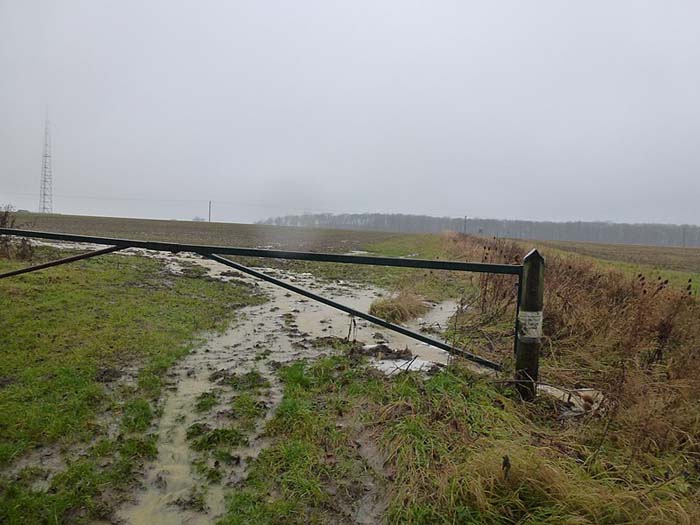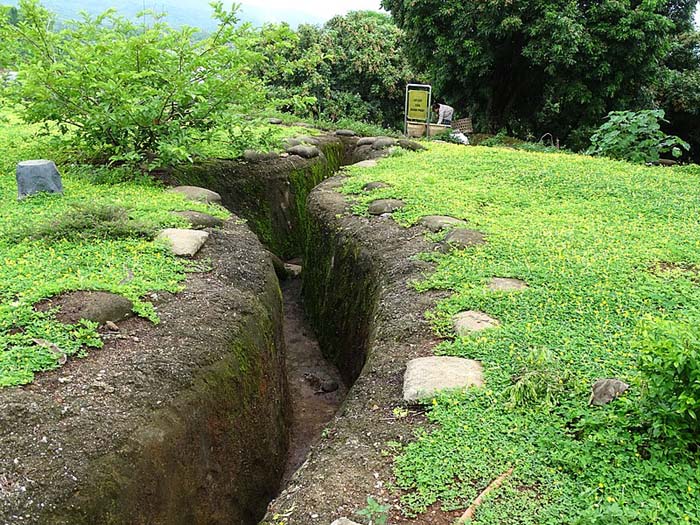
Managing and redirecting water to avoid water damage, erosion, and flooding can be an overwhelming undertaking for any homeowner without knowledge of DIY yard drainage methods. In order to help you deal with typical yard issues, this guide gives an introduction to basic draining procedures.
Here are some DIY yard drainage methods to consider:
If you don’t properly maintain your yard drainage, water can accumulate and cause damage to your home.
- Downspouts and Gutters
Keep the downspouts clear, and make sure the gutters are clear so water doesn’t pool around the foundation. To further direct water flow, you can use splash blocks or downspout extensions.
- Rain Barrels
These divert water away from the yard by collecting it from downspouts and gutters. You can use the collected water for gardening or any other purpose.
- Dry Well
After accumulating in a dry well, water slowly absorbs into the earth. To help disperse the water, you drill a hole and fill it with gravel.
- Trench Drain
One way to collect runoff is with a trench drain, which is essentially a long, narrow grate. Patios, driveways, and other areas prone to high water pressure are ideal locations for its installation.
- Swales
A swale is a grassy, shallow waterway that directs water to a specific location. You can use it to redirect overflow from a garden or yard.
- Catch Basins
To collect and channel runoff, set up these small grates in the yard. They can channel the water to an existing drainage system or link to one.
- Rain Garden
Because of its design, this garden can soak up rainwater and let it seep into the ground over time. You can place plants that thrive in damp environments inside to soak up any surplus moisture.
- Permeable Pavers
To lessen the impact of runoff, use permeable pavers instead of asphalt or solid concrete surfaces.
- Slope Correction
To redirect water away from trouble spots, you can alter the terrain so that it gently slopes.
- French Drain
To do this, dig a trench, lay a perforated pipe, and use gravel to cover the trench. It redirects water away from the problematic area and toward a better one, such as your yard’s lower part or a drain.

Identifying drainage issues
Mold growth, foundation problems, and water damage are just a few of the concerns that can accrue from poor drainage in both commercial and residential structures. The following guide helps identify and understand drainage problems:
Signs of Drainage Problems
- Uneven Walkways or Driveways
Walkways and driveways that settle or shift may indicate soil instability due to poor drainage.
- Erosion
In low-lying places, you can see roots that are sticking out, bare spots, or sediment that has accumulated, all of which indicate soil erosion.
- Soggy Lawn or Garden
If water pools in some areas of the garden or lawn for several days after rain, the drainage may be insufficient.
- Gutters Overflowing
If your gutters are clogged or don’t have enough room to hold water, it could mean that your drainage system isn’t working properly.
- Issue with the Foundation
If you see diagonal or horizontal cracks in your basement walls or foundation, it could be a sign of water pressure from poor drainage.
- Water Stains
Look for signs of water damage, such as stains on the floors, ceilings, and walls that might indicate water seepage.
- Water Pooling
Water collecting in one area is a clear indication of drainage issues, such as in the basement, the area around the foundation, or the yard.
- Mold and Basement Dampness
Musty smells, mold growth, or persistent dampness in the basement are common signs of water infiltration.
Reasons for Drainage Problems
Downspouts Near the Foundation
Water seepage can occur when downspouts empty their contents too close to the foundation.
Incorrectly Installed Drainage Systems
When not set up properly, drainage systems like French drains can’t properly channel water away.
Clogged Downspouts or Gutters
If debris blocks the downspouts and gutters, water may overflow and pool near the foundation.
Overwatering
Watering your garden and lawn too much may cause drainage and saturation problems.
Incorrect Grading
If the land slopes in a certain direction, direct the water away from the foundation. Improper grading can be the cause of the water accumulation.
How to deal with drainage problems
- Improve Drainage Using Landscaping
To redirect water runoff, use rain gardens or swales.
- Adjust Grading
For every ten feet, there should be a 6-inch drop in elevation away from the foundation.
- Waterproof Basement Walls
Cover your basement walls with a waterproof coating to prevent water from seeping in.
- Prolong Downspouts
Make sure the downspouts are at least six feet long to divert water away from the foundation.
- Hire an Expert
If the problem persists or worsens, contact a structural engineer or drainage specialist.
- Clean Downspouts and Gutters
To keep water flowing properly, clean and maintain the downspouts and gutters on a regular basis.
- Install French Drains or Other Drainage Systems
If the problem of water pooling persists, more drainage systems may be required.
Implementing Your DIY Drainage Solution
Here are the main things to keep in mind when considering DIY yard drainage methods:
- Installation and maintenance
For a well-designed and operational drainage system, it is important to adhere to installation best practices. If you want your drainage system to last and work properly, you need to maintain it regularly.
- Gather materials and tools
Collect all the necessary tools to execute the chosen drainage plan. Equipment such as landscaping fabric, perforated pipes, shovels, gravel, and trenches are common.
- Have a plan for your drainage
After deciding where the water should go, select the best drainage method. Make sure to factor in any required local regulations or licenses while making plans.
- Inspect the soil type and slope
Grade your yard properly so that it slopes away from your home. Take a look at your yard’s soil drainage to see what works best.
Make Your Yard Drain Faster
You can prevent erosion, waterlogging, and other problems by enhancing the yard’s drainage system. Some ways to speed up your yard’s draining are as follows:
- Use permeable pavers
- Think about replacing your patios and driveway pavers with some permeable ones. These allow water to seep through, reducing runoff.
- Soil aeration and amendment
- In order to boost the soil’s ability to absorb water, aerate it. Add organic materials, such as compost, to soils with a high clay content. This will help to improve drainage and permeability.
- Regrading the yard
- Reshape or regrade the yard to ensure that water drains away from your home and other buildings. Instead of running off problematic areas, direct the water onto drainage systems with a gentle slope.
- Install a rain garden or a dry well
- A dry well is an underground structure that gathers water from overflow and lets it seep into the soil. Planting a rain garden aims to absorb and filter runoff.
- Install a French drain
- You can redirect surface and underground water using a French drain. A gravel- or rock-filled trench connects to a perforated pipe in these drains. Put it in place in low regions to redirect water to a better spot.
- Use drainage pipes and grates.
- In places where water gathers, set up drainpipes or grates to channel the water to an appropriate drainage outlet, such as a dry well or storm drain.
- Plant it correctly
- Plant grasses and shrubs with deep roots to aid drainage. Go around plants that love damp soil. Improving water absorption and preventing soil erosion are two benefits of planting correctly.
- Consider professional help
- A drainage professional or landscape architect can help you come up with a unique plan to fix complex or severe drainage issues.
- Evaluate the yard’s drainage issues
- Find out whether there is a problem with the drainage and where water is pooling. Be on the lookout for low spots, slopes, and areas with heavily clayed or compacted soil.
- Create berms and swales
- Swales, or shallow ditches that resemble troughs, direct water to drainage areas. In order to channel water, berms are elevated mounds. Both have the ability to control the flow of water and improve drainage.
With these DIY yard drainage methods, you can fix drainage problems in your yard and keep water from pooling there.
Conclusion
Every approach has its own set of advantages and suits specific situations. Your choice will depend on the severity of your drainage problem, your financial resources, and the layout of your yard. Get some expert assistance from someone who knows about drainage and landscaping if you aren’t sure what to do.
